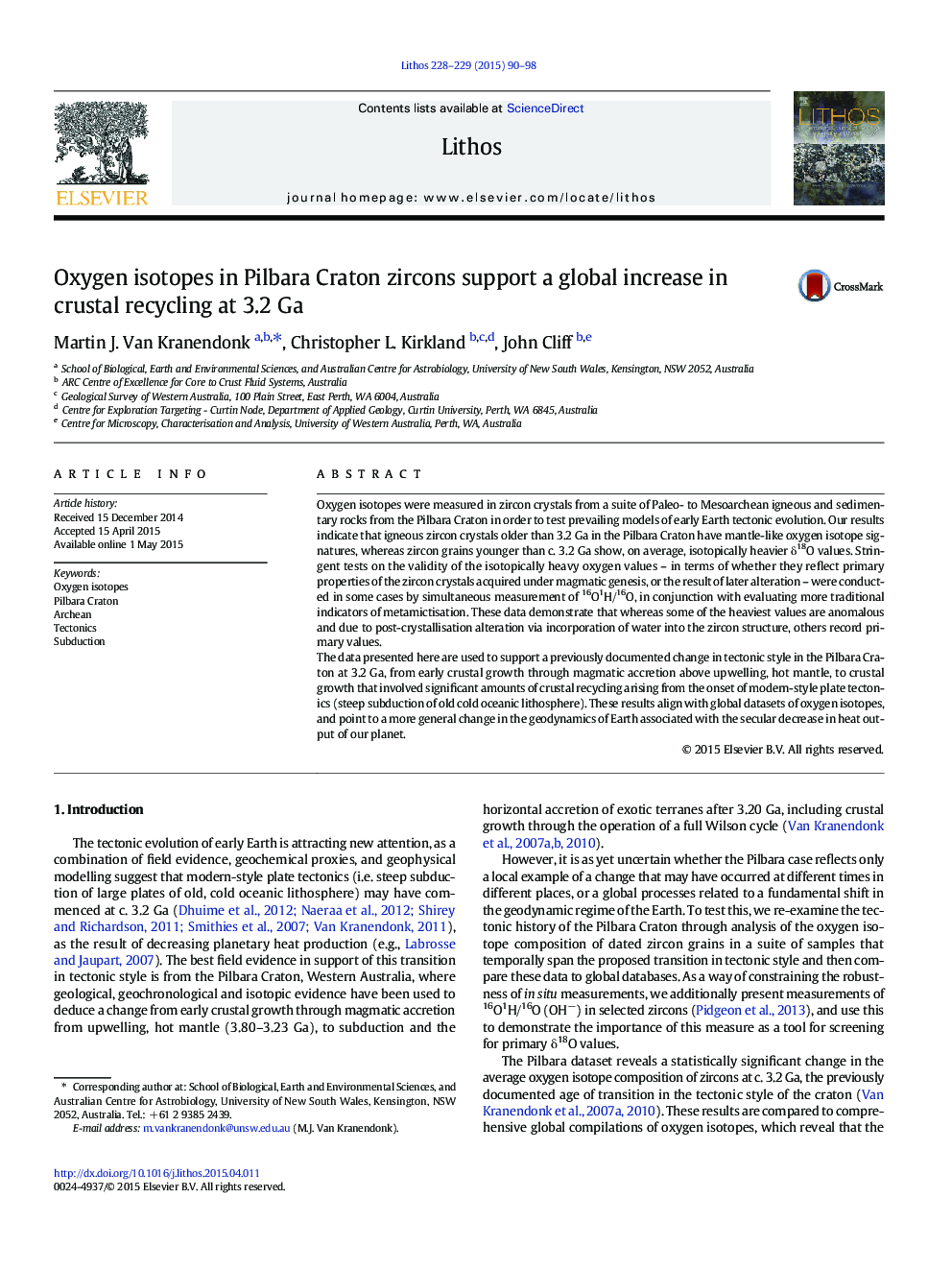| Article ID | Journal | Published Year | Pages | File Type |
|---|---|---|---|---|
| 4715692 | Lithos | 2015 | 9 Pages |
•Oxygen isotopes on a suite of dated zircons from the Archean Pilbara Craton•Highly anomalous δ18O values in specific zircons ascribed to water damage•Statistically significant increase in Pilbara and global δ18O values at c. 3.2 Ga•Oxygen isotopes support a c. 3.2 Ga onset of modern-style plate tectonics.
Oxygen isotopes were measured in zircon crystals from a suite of Paleo- to Mesoarchean igneous and sedimentary rocks from the Pilbara Craton in order to test prevailing models of early Earth tectonic evolution. Our results indicate that igneous zircon crystals older than 3.2 Ga in the Pilbara Craton have mantle-like oxygen isotope signatures, whereas zircon grains younger than c. 3.2 Ga show, on average, isotopically heavier δ18O values. Stringent tests on the validity of the isotopically heavy oxygen values – in terms of whether they reflect primary properties of the zircon crystals acquired under magmatic genesis, or the result of later alteration – were conducted in some cases by simultaneous measurement of 16O1H/16O, in conjunction with evaluating more traditional indicators of metamictisation. These data demonstrate that whereas some of the heaviest values are anomalous and due to post-crystallisation alteration via incorporation of water into the zircon structure, others record primary values.The data presented here are used to support a previously documented change in tectonic style in the Pilbara Craton at 3.2 Ga, from early crustal growth through magmatic accretion above upwelling, hot mantle, to crustal growth that involved significant amounts of crustal recycling arising from the onset of modern-style plate tectonics (steep subduction of old cold oceanic lithosphere). These results align with global datasets of oxygen isotopes, and point to a more general change in the geodynamics of Earth associated with the secular decrease in heat output of our planet.
